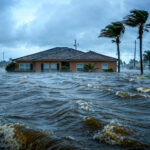Walmart Inc. isn’t the only corporation that has seen its Tesla Inc. solar panels catch fire.
On Friday, Amazon.com Inc. said a June 2018 blaze on the roof of one of its warehouses in Redlands, California, involved a solar panel system that Tesla’s SolarCity division had installed. The Seattle-based retail giant said by email that it has since taken steps to protect its facilities and has no plans to install more Tesla systems.

News of the Amazon fire comes just three days after Walmart dropped a bombshell lawsuit against Tesla, accusing it of shoddy panel installations that led to fires at more than a half-dozen stores. The claims threaten to further erode Tesla’s solar business at a time when the company is fighting to gain back market share.
Walmart and Tesla issued a joint statement late Thursday, saying they were in discussions to resolve their issues. “Both companies want each and every system to operate reliably, efficiently, and safely,” they said.
In the complaint filed Tuesday, Walmart said it had leased or licensed roof space at more than 240 stores to Tesla’s energy unit. Two of the Walmart fires occurred in May 2018. Amazon said it has a very small number of solar systems installed by Tesla.
More widely known for its electric cars, Tesla bought panel installer SolarCity three years ago in a $2 billion deal that proved highly controversial. SolarCity’s chief executive officer at the time is the cousin of Tesla CEO Elon Musk, and Musk was the chairman of SolarCity’s board.
Also this week, Business Insider reported that Tesla launched an effort to replace a faulty part used in some of its solar panel systems last year. It was unclear whether issues with the component known as a “connector” affected Walmart or Amazon installations.
Tesla said in response to the Business Insider story that some connectors manufactured by Amphenol Corp. “experienced failures and disconnections at a higher rate than our standards allow.” Over the past year, the company said, less than 1% of sites with these connectors exhibited abnormal behavior.
Amphenol did not respond to a request for comment.
–With assistance from Brian Eckhouse.




















 What’s Not Changing in 2025: Homeowners Outlook, Re Retentions
What’s Not Changing in 2025: Homeowners Outlook, Re Retentions  Moody’s: Rising Flood Risks Posing Greater Challenges for Eastern and Southern U.S.
Moody’s: Rising Flood Risks Posing Greater Challenges for Eastern and Southern U.S.  East Coast High-End Car Theft Ring Busted
East Coast High-End Car Theft Ring Busted  December 22 Predicted as Worst Day for Holiday Travel This Year
December 22 Predicted as Worst Day for Holiday Travel This Year 





